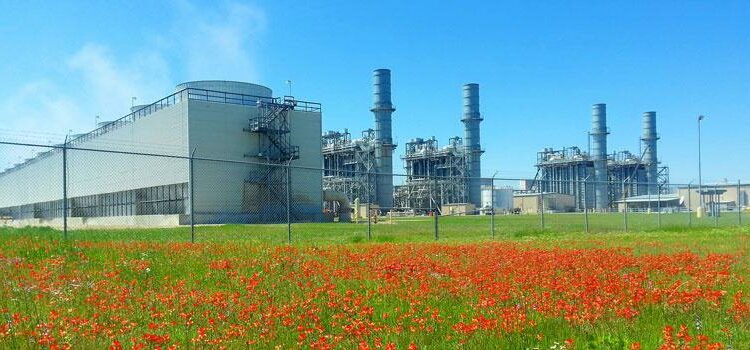Despite a summer of weatherizing the Texas utilities, there are those who still believe that things aren’t as ready as they might be for a winter storm like Uri, the historic deep freeze that paralyzed Texas for five days last February and cost 246 lives.
Both Gov. Greg Abbott and the Public Utility Commission of Texas (PUCT) have been confident in their declarations that there will be no blackouts this winter.
In a wide-ranging telephone interview, David Naylor, president and CEO of Rayburn Electric Cooperative in Rockwall, a suburb of Dallas, told me that despite the political assurances, utility executives are praying that the winter will be mild – which has been projected for the state.
Texas has a complicated electric market with a plethora of utilities. There are 75 rural electric coops; 25 municipal utilities, notably CPS Energy in San Antonio and Austin Electric in the capital; and eight large investor-owned utilities, including Oncor, Entergy
ETR
, AEP, and CenterPoint
CNP
. Also, there are some two dozen retailers. Some of these went into bankruptcy immediately after Winter Storm Uri.
Rayburn provides wholesale electric energy and transmission services to its four electric distribution coop members, located in northeastern Texas: Fannin County Electric, Farmers Electric, Grayson Collin Electric, and Trinity Valley Electric.
The not-for-profit coop has a high percentage of renewables in its portfolio of purchase agreements, including hydro and a lot of solar from within its service territory. It is named for Sam Rayburn (D-Texas), the legendary speaker of the U.S. House Representatives, who shepherded the Rural Electrification Act through Congress.
Getting A Seat At The Table
The Texas economy is booming. But when it comes to buying power from new generating facilities, the coops are concerned that they might have difficulty “getting a seat at the table,” Naylor told me. Green-leaning, big tech companies, like Google
GOOG
and Amazon, are buying up the output of utility-scale, renewable energy facilities.
These electricity-intensive companies, which are flooding into Texas, can be unaware of the situation on the ground when it comes to electric supply. “This has made it hard for us to be heard” Naylor said. The new entrants might buy the entire electrical output of a big solar installation, enough for their nationwide operation, when they need only 29 percent of that for their Texas operations. “One of our four distribution coop members might want to buy some of that power,” he said.
Rayburn, like other utilities, buys power in relation to its specific loads. It only owns a quarter of a large, combined cycle gas unit, the majority of which is owned by Calpine
CPN
, a merchant generator.
The four Rayburn members are responsible for power in their service areas and must educate the newcomers on the operation of the electric supply infrastructure in Texas. Naylor doesn’t see Google, Amazon, or Tesla
TSLA
as competitors, but rather as neighbors in need of education. The coop would like to have a level playing field when it comes to buying power, not be shouldered out by corporate giants, he said.
The tech giants moving to Texas from California and elsewhere are desirable customers for Rayburn. They are large buyers of electricity: A data miner, for example, could buy fully half the 1,000-megawatt peak capacity of Rayburn, Naylor said. Electricity to these entities can be cut off in times of stress – like a severe winter storm — suits the utilities fine, making peak shaving easier. Data mining is all-around a good load for utilities if it remains interruptible, he said.
Uri, ‘A Regulatory Failure’
Naylor, like utility managers across Texas, considers the Uri deep freeze crisis to have been more a regulatory failure than a market one. The Electric Reliability Council of Texas (ERCOT) kept the price at the astronomically high market cap for the full five days of Uri (Feb. 13-17) when that wasn’t necessary.
Naylor said: “We incurred three years’ power purchase costs in just five days,” Naylor said.
The Texas legislature came to the utilities’ rescue with a bill authorizing the securitization of Uri’s costs — a way to spread the debt over many years, preventing it from being dumped on utility customers in a huge rate increase.
The only alternative was bankruptcy which, Naylor said, Rayburn considered at the time of the winter storm. Only one Texas electric coop, the venerable Brazos, sought bankruptcy protection. The others waited for the legislature to act and have taken the securitization route. Naylor isn’t happy with this solution, but he does see it as the best available option.
As well as worrying about the state of weatherization in Texas, Naylor wonders about the wisdom of the swift redesign of the market, which is being undertaken by the PUCT.
The fear is that the newly appointed PUCT and the new management at ERCOT, the grid operator, are trying to remake the market in two months. “It took two to four years to design the Texas market,” Naylor said. “They are trying to do it very fast.”
Looking forward, he is hopeful about hydrogen. While he would like to see carbon capture move ahead, he doesn’t think enough money for research and development is available, nor the political will to really pursue it. Until better storage or some other option is available, Naylor looks to the continued burning of natural gas in highly efficient combined cycle plants.
An engineer, Naylor relishes his job running Rayburn. He joined the coop as executive vice president 2011, and before that he was a management consultant. Naylor has been in charge since 2017 and as a native of Arkansas, he has had to learn the ways of Texas. “You know, just because something is working somewhere else in the United States, doesn’t mean that’s what they’re gonna do here,” he said.











